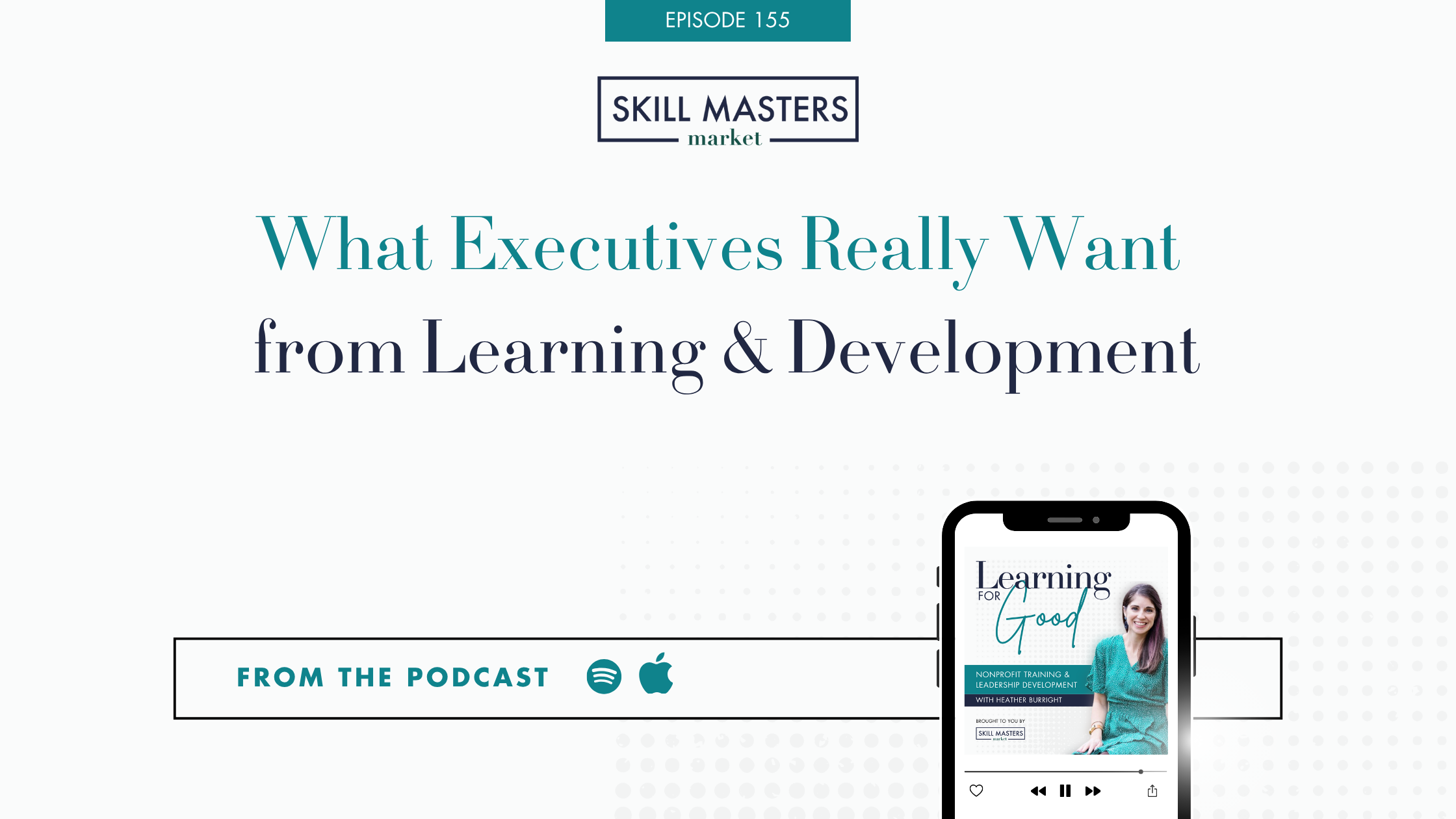What Nonprofit Executives Really Want from Learning & Development
Sometimes, when we work with nonprofit executive leaders, it's easy to jump to an assumption about what they thought or what they wanted. The problem is that when we act on that, things don't turn out the way either of us expects.
I don't want that to be you, so in this episode, I'm having a chat with Danika Mitcham, the Vice President of Supporter Operations at Compassion International. We delve into what nonprofit executives really want from learning and development, their expectations, and what we may be assuming wrong.
▶️ Key Points:
02:49 Lessons that shaped Danika's approach to work and leadership
06:43 L&D's critical role in a nonprofit organization's strategy
09:25 Why Danika invests in training as a Nonprofit Executive
13:09 Balancing short-term pressures with long-term sustainability
16:14 What Danika looks for when she invests in training
18:46 The importance of measuring impact and a helpful tip
21:12 What L&D teams and executives should know about working together
Nonprofits often wrestle with a tough tension: meeting today’s goals while preparing for tomorrow’s future. That’s where learning and development (L&D) comes in—not as a “nice-to-have,” but as a strategic lever for sustainability.
In episode 155 of Learning for Good, I sat down with Danika Mitcham, an executive at Compassion International, to hear firsthand what leaders expect from L&D.
Training is a Strategic Lever for Your Nonprofit
Executives balance short-term outcomes with long-term vision. L&D plays a critical role in building the capabilities and culture needed for growth.
This means we have to think differently about training and development. It isn’t a cost center. It’s a strategic lever for growth.
Unfortunately, professional development is often the first budget cut. But, as Danika shared, that decision doesn’t just shortchange staff; it shortchanges the organization’s sustainability and mission outcomes.
The ROI of Training in Your Nonprofit
Training can impact mission critical strategies like program delivery, donor retention, and fundraising results. But it also improves employee engagement, retention, customer service, and organizational capacity.
When talking about the ROI of training, it’s important to consider both how it impacts the organization and how it impacts the people inside of it.
Finding Champions for Training
Executives value evidence and advocacy. Partner with leaders, show the impact of your work, and let champions amplify your value across the organization. Danika is obviously a huge proponent of training and shows up as a champion for L&D in her organization. We have to find the people like Danika in our organizations and allow them to share the message too.
Investing in Training at Your Nonprofit
Nonprofit executives don’t just want more training, They want L&D that strengthens the organization’s foundation, equips staff for the future, and directly supports mission impact. True investment is about personal growth. We help staff show up as partners, leaders, and problem-solvers.
As Danika shared:
“Training and development are not just side projects. They are strategic levers.”
Let’s show up that way.
To learn more about what executives really want from training, tune into episode 155 of the Learning for Good podcast.
Additional Resources Just for You
Other Helpful Podcast Episodes:
Subscribe to the Nonprofit L&D Insiders.
Join the Nonprofit L&D Collective.
Support the Learning for Good Podcast
Become a sponsor.
Ask a question or suggest a topic.
We love hearing from listeners!
Leave a review.
Reviews teach us what content resonates most and help us reach more people!

